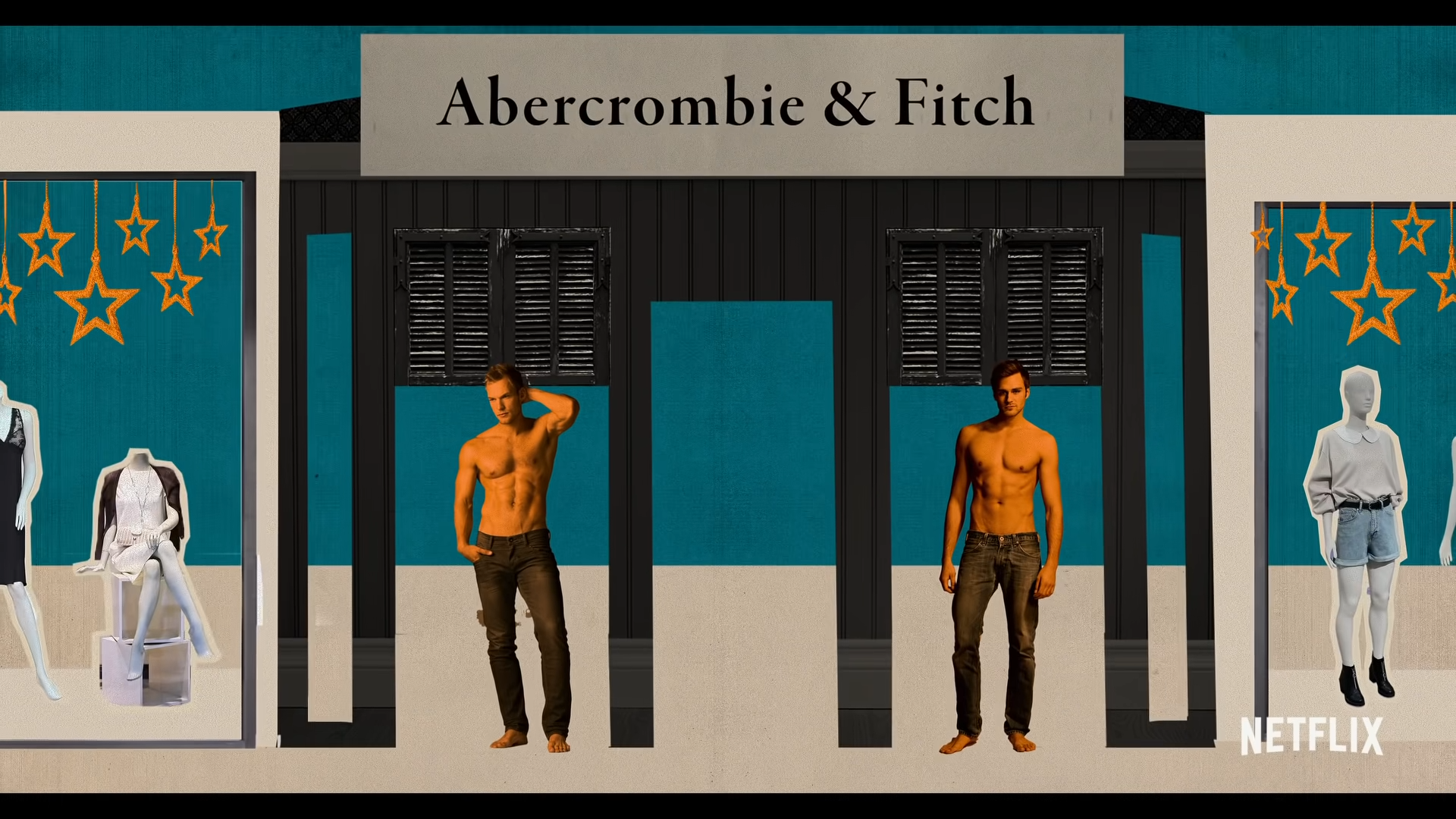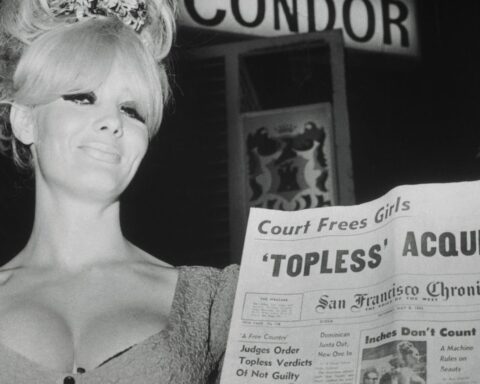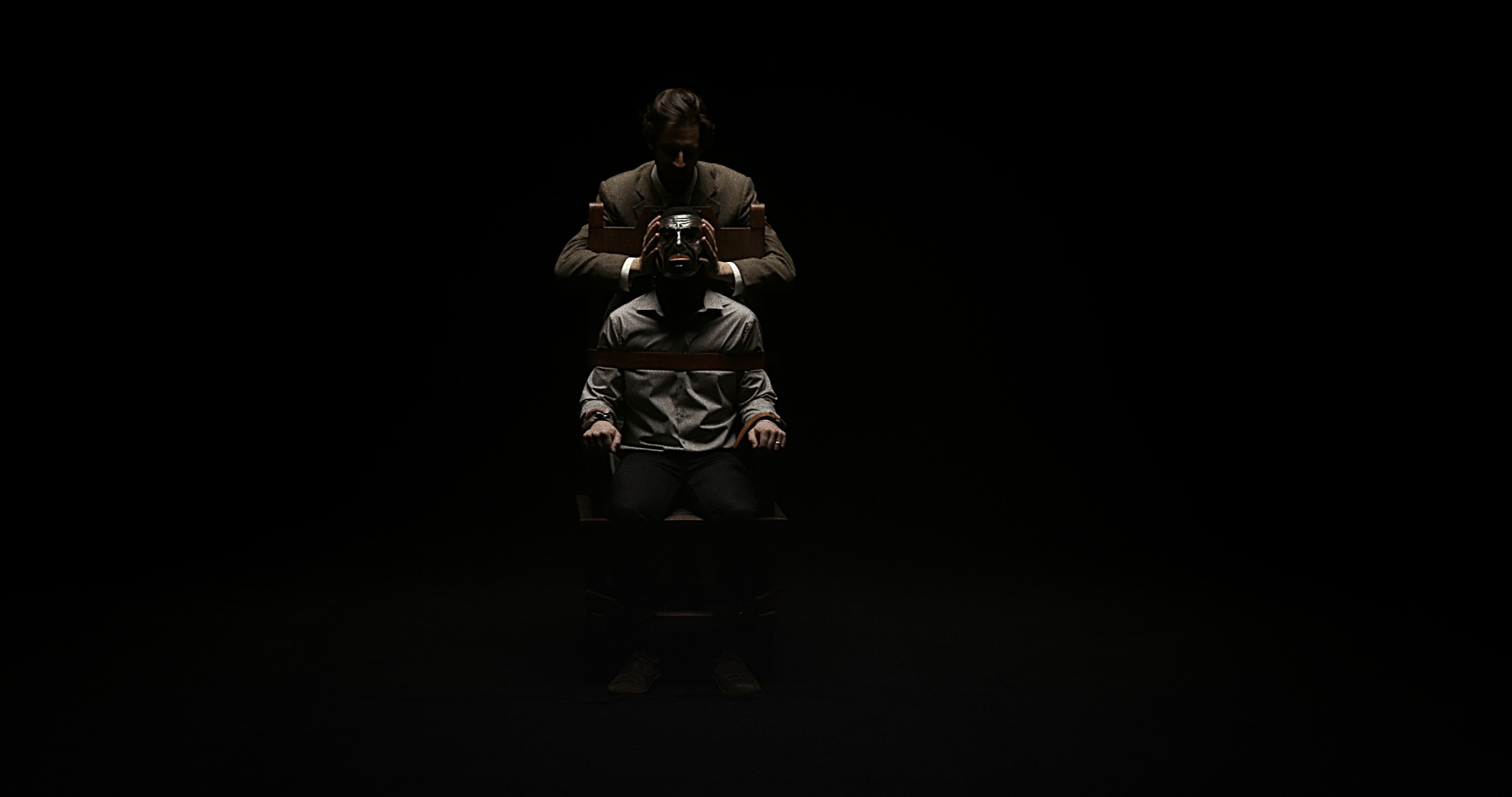White Hot: The Rise & Fall of Abercrombie & Fitch
(USA, 89 min.)
Dir. Alison Klayman
New Kids on the Block had a bunch of hits
Chinese food makes me sick
And I think it’s fly when girls stop by
For the summer, for the summer
I like girls that wear Abercrombie & Fitch
I’d take her if I had one wish
But she’s been gone since that summer, since that summer
-“Summer Girls” by LFO, 1999
Hits were indeed had by those New Kids on the Block in the 1990s. So too did Abercrombie & Fitch enjoy massive success at the turn of the Millennium. Immortalised in the song by the LFO, and yearbook fashion trends we’d rather forget, Abercombie & Fitch embodied the last stand for the “All American” boy or girl. These were the prom kings and queens. The Abercrombie & Fitch crowd friends were just a few years shy of the cast of Friends. They were the hair-gel saturated poster kids of magazines. And they were all white. White Hot: The Rise & Fall of Abercrombie & Fitch sees in one fashion empire a microcosm of exclusion in America. Directed by Alison Klayman, White Hot is a fast fashion slice of documentary. A product of its own corporate machine, it wears a brand well but feels a bit last season
Sex Sells
Klayman, who profiled Alanis Morissette in Jagged and exposed Steve Bannon’s fondness for kombucha in The Brink, assembles a chorus of talking heads to chronicle A&F’s rise and fall. The cast includes former store employees, corporate workers, models, and pundits. They chart an admittedly fascinating insiders’ tale about how Abercombie & Fitch CEO Mike Jeffries built an empire. Anyone who wandered the malls of the late 1990s and early 2000s will recognize the high-end yet inviting boutiques. The talking heads explain how Jeffries meticulously calibrated every element of the stores. Shuttering the windows, for one, leant an air of mystique. Clerks sprayed perfumes in the air that inspired hormones to rage. Loud music and mood lighting let A&F reverberate coolness. The clothes, meanwhile, were rooted in a tradition of American sportsmanship that adapted to the energy of the MTV age.
There’s a lot of fun to be had in White Hot, however, as interviewees note that A&F somehow sold a clothing line by making garments secondary. The real selling point of Jeffries’ vision was not the clothes, but the people who wore them. Images of A&F’s shopping bags, advertisements, and in-store portraits highlighted statuesque models wearing little from the waist up. Klayman’s film revisits how A&F sold sex in spades. The marketing for A&F, shot by iconic-but-allegedly-problematic queer photographer Bruce Weber, oozed sex appeal. Recruiters lined up a parade of hunks who got sweaty in Abercrombie and had washboard abs to launder them. The models recall strange photo sessions that put their musky armpits in close-up while their jeans were barely in the frame. White Hot recounts a very strange frat house corporate culture that capture the American Pie era ethos.
Gay-baiting and Racism On-Brad
Klayman’s inquiry, on one hand, unpacks the inadvertent queerness of A&F’s campaigns. Jeffries’ ideal evoked the jocks, but gave young men in their late teens to early twenties desirable images of male physique. Promotional images favoured locker rooms and buff guys in their undies. Ironically, employees recall how the semi-closeted Jeffries didn’t quite get his own brand. A&F sold exclusivity by pitting the traditional schoolyard bullies as the ideal coat hangers. Instead, the kids they bullied appropriated the threads with an inside joke.
The interviewees also note how Jeffries’ tightly manicured image of the ideal Abercrombie model revealed a deeper insidiousness. Not only were the models all white poster boys, the store staff mirrored the “All American” look. T-shirts sported casual racism in lieu of logos. White Hot introduces plaintiffs in a class-action lawsuit against A&F that challenged the brand’s racism. Former employees and job applicants speak candidly about micro-aggressions to open acts of racism. From sticking people of colour in the back room to declining an applicant because the store “had enough Filipinos,” the charges are appalling. When former managers and recruiters highlight how the company rewarded success—not based on performance, but on image—Klayman’s doc turns the ugliness of Abercrombie & Fitch inside-out.
Off the Rack Exclusion
White Hot, moreover, notes that this information isn’t new. A 2006 roller-coaster interview with Jeffries saw the CEO layout his game-plan unabashedly. “Candidly, we go after the cool kids,” Jeffries told Salon. The article’s writer, Benoit Denizet-Lewis, explains how the piece drew little notice upon publication even though the CEO preached exclusionary practices. The indifference speaks volumes about American culture of the time. Seven years later, when diverse voices had more platforms, the article went viral. Coupled with the lawsuit, the doc notes how the article tipped the Abercrombie brand. What once was cool quickly became retrograde. (Although the doc over-simplifies consumer culture by drawing too much of a cause-and-effect line here.)
The talking heads essay culminates with a query about Abercrombie’s court-ordered overhaul. Brands can’t afford to ignore diversity in 2022. However, while some interviewees respectfully suggest the brand and corporate culture changed, others argue that it’s reluctant lip service. By deconstructing Abercrombie and Fitch’s slide from being en vogue to being out of fashion, White Hot unpacks how much culture has changed in the last decade, and how far it has to go.
While White Hot admittedly feels a bit off the rack with its talking heads style, the familiarity adds a meta factor. This format mixed with energetic graphics and inserts aligns with the Netflix house style. The streamer, like A&F, has its model for success. However, the doc learns where Jeffries failed. Klayman puts a wide range of speakers of different races, genders, and sexual identities to speak. White Hot favours a diversity of voices where Abercrombie manufactured a homogenous one. The doc therefore enjoys a wide range of perspectives that confront the topic from all angles. There’s not much new here, admittedly, but some approaches don’t go out of fashion.
White Hot: The Rise & Fall of Abercrombie & Fitch debuts on Netflix on April 19.













